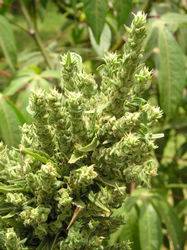Welcome to the Revival of the Ultimate Sativa Thread!
If you've never seen us before this is the sativa growers community thread. Where growers and smokers from around the world come to talk about their favorite sativas. From old classics like Oaxacan, Panama Red, and Acapulco Gold to the new dutch sativa hybrids. Plus bagseed sativas from all over the world. We have them all here.
My name is motaco, and I am the creator of this thread. But we owe the wealth of information and all of the pictures in this thread to those who help contribute to it. And that is the general point of it. This is a place where the community can join together to pool all it's general knowledge about sativas, and their role in our smoking culture into a collective data base, and talk to one another.
I don't want it to seem like I'm the sole author of this thread. Far from it. This is a community thread where we rely on each other for info. I may have started it but I am just the editor for lack of a better word. Feel free to correct me on info, add to segments, tell stories from travels, etc. This thread belongs to you as much as me. A bit like wikipedia.
So I'm gonna start things off proper with a picture of Chamans tropical sativas, to get everyone in the mood. Two of my favorite sativa pics of all time. (shoulda been pic of the month )
)
** PS-** Many years ago I had a change in living situation that has stopped me from being able to grow anymore. So almost all of these pics aren't mine, they have been contributed by members or found on the internet. If you see one that is yours or you just know is mislabeled please pm me so I can fix it.
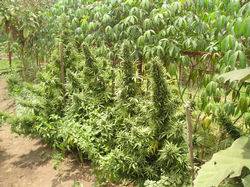
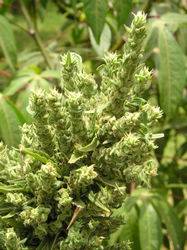
This is the thread dedicated to all sativa growers and lovers to post anything they want. hybrids, pure, landrace, whatever. Just reminisce about old strains.
NEW UPDATE!! ULTIMATE SATIVA GROW THREAD now in growers forums. With all the interest sparked over sativas I was asked to start a grow thread so that the threads are more coordinated and information can flow more efficient if the threads take specific paths. So I'd like the RUST to stay about different strains, and what the stones are like. Sativa stories and pictures, general sativa conversation and stuff like its always been. And direct more of the grow questions and strain reccomendations to the new grow thread. Linked here.
https://www.icmag.com/ic/showthread.php?p=1209877#post1209877
And don't forget to preserve your rare and exotic sativa leaves for identification; a forward step on sativa conservation. It might be all thats left one day. My thread on preserving leaves.
https://www.icmag.com/ic/showthread.php?p=1021636#post1021636
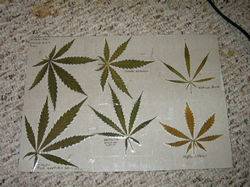
TO ALL UN REGISTERED READERS
So you've scrolled through this thing and you still don't have anything to say? What are you doing? join up! We are a community based on sativa lovers and growers and we need as big of a community as possible. It's how we learn from each other.
Just growing brickweed bagseeds you collected over the years and think nobody is interested? Man we love seeing other countries export. I got several mexican bagseed lines I saved because I loved them. We are not pot snobs here. All are welcome. Just an old timer that's smoked it all and got the cough to prove it? Those old stories about chocolate thai, acapulco gold, panama red. they are priceless come share them with others that remember them. Especially if you've got old scanned pics! we love them!
thirty year old santa marta colombian gold. grown by indians. (thanks desiderata)
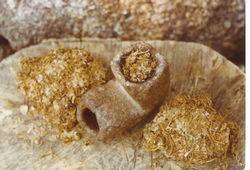
Thanks to 4 seasons you can also take a trip down memory lane in the "Vintage Cannabis Photography" thread.
https://www.icmag.com/ic/showthread.php?t=135579
***NEW LINK***
Predates the smokers explosion of the jazz scene during prohibition. An incredibly informative link about medical marijuana and it's uses in America.
http://antiquecannabisbook.com/
70s Era "Growers Guide"
Well lets get this started the old fashioned way. Just like the old thread here are some exerpts of legends and grow pioneers Ed Rosenthal and Mel Frank. They were some of the best authors on the subjects at the time, and should be required reading for sativa heads.
Marijuana grown in the United States is usually one of two main types: indica or sativa. Indica plants originated in the Hindu-Kush valleys in central Asia, which is located between the 25-35 latitudes. The weather there is changeable. One year there may be drought, the next it might be cloudy, wet, rainy or sunny. For the population to survive, the plant group needs to have individuals which survive and thrive under different conditions. Thus, in any season, no matter what the weather, some plants will do well and some will do poorly.
Indica was probably developed by hash users for resin content, not for flower smoking. The resin was removed from the plant. An indication of indica's development is the seeds, which remain enclosed and stick to the resin. Since they are very hrd to disconnect from the plant, they require human help. Wild plants readily drop seeds once they mature.
Plants from the same line from equatorial areas are usually fairly uniform. These include Colombians and central Africans. Plants from higher latitudes of the same line sometimes have very different characteristics. These include Southern Africans, Northern Mexicans, and indicas. The plants look different from each other and have different maturities and potency. The ratio of THC (the ingredient which is psychoactive) to CBD (its precursor, which often leaves the smoker feeling disoriented, sleepy, drugged or confused) also varies.
High latitude sativas have the same general characteristics: they tend to mature early, have compact short branches and wide, short leaves which are dark green, sometimes tinged purple.
Indica buds are usually tight, heavy, wide and thick rather than long. They smell "stinky", "skunky", or "pungent" and their smoke is thick - a small toke can induce coughing. The best indicas have a relaxing "social high" which allow one to sense and feel the environment but do not lead to thinking about or analyzing the experience.
Cannabis sativa plants are found throughout the world. Potent varieties such as Colombian, Panamanian, Mexican, Nigerian, Congolese, Indian and Thai are found in equatorial zones. These plants require a long time to mature and ordinarily grow in areas where they have a long season. They are usually very potent, containing large quanities of THC and virtually no CBD. They have long, medium-thick buds when they are grown in full equatorial sun, but under artificial light or even under the temperate sun, the buds tend to run (not fill out completely). The buds usually smell sweet or tangy and the smoke is smooth, sometimes deceptively so.
The THC to CBD ratio of sativa plants gets lower as the plants are found further from the equator. Jamaican and Central Mexican varieties are found at the 15-20th latitudes. At the 30th latitude, varieties such as Southern African and Northern Mexican are variable and may contain equal amounts of THC and CBD, giving the smoker and buzzy, confusing high. These plants are used mostly for hybridizing. Plants found above the 30th latitude usually have low levels of THC, with high levels of CBD and are considered hemp.
If indica and sativa varieties are considered opposite ends of a spectrum, most plants fall in between the spectrum. Because of marijuana and hemp's long symbiotic relationship with humans, seeds are constantly procured or traded so that virtually all populations have been mixed with foreign plants at one time or another.
Even in traditional marijuana-growing countries, the marijuana is often the result of several cross lines. Jamaican ganja, for example, is probably the result of crosses between hemp, which the English cultivated for rope, and Indian ganja, which arrived with the Indian immigrants who came to the country. The term for marijuana in Jamaic in ganja, the same as in India. The traditional Jamaican term for the best weed is Kali, named for the Indian killer goddess.
here is some info from mj botany.
a) Colombia - (0 to 10 north latitude)
Colombian Cannabis originally could be divided into two basic strains: one from the low-altitude humid coastal areas along the Atlantic near Panama, and the other from the more arid mountain areas inland from Santa Marta. More recently, new areas of cultivation in the interior plateau of southern central Colombia and the highland valleys stretching southward from the Atlantic coast have become the primary areas of commercial export Cannabis cultivation. Until recent years high quality Cannabis was available through the black market from both coastal and highland Colombia. Cannabis was introduced to Colombia just over 100 years ago, and its cultivation is deeply rooted in tradition. Cultivation techniques often involve transplanting of selected seedlings and other individual attention. The production of "la mona amarilla" or gold buds is achieved by girdling or removing a strip of bark from the main stem of a nearly mature plant, thereby restricting the flow of water, nutrients, and plant products. Over several days the leaves dry up and fall off as the flowers slowly die and turn yellow. This produces the highly prized "Colombian gold" so prevalent in the early to middle 1970s (Partridge 1973). Trade names such as "punta roja" (red tips [pistils] ), "Cali Hills," "choco," "lowland," "Santa Marta gold," and "purple" give us some idea of the color of older varieties and the location of cultivation.
In response to an incredible demand by America for Cannabis, and the fairly effective control of Mexican Cannabis importation and cultivation through tightening border security and the use of Paraquat, Colombian farmers have geared up their operations. Most of the marijuana smoked in America is imported from Colombia. This also means that the largest number of seeds available for domes tic cultivation also originate in Colombia. Cannabis agri-business has squeezed out all but a few small areas where labor-intensive cultivation of high quality drug Cannabis such as "Ia mona amarilla" can continue. The fine marijuana of Colombia was often seedless, but commercial grades are nearly always well seeded. As a rule today, the more remote highland areas are the centers of commercial agriculture and few of the small farmers remain. It is thought that some highland farmers must still grow fine Cannabis, and occasional connoisseur crops surface. The older seeds from the legendary Colombian strains are now highly prized by breeders. In the heyday of "Colombian gold" this fine cerebral marijuana was grown high in the mountains. Humid lowland marijuana was characterized by stringy, brown, fibrous floral clusters of sedative narcotic high. Now highland marijuana has become the commercial product and is characterized by leafy brown floral clusters and sedative effect. Many of the unfavorable characteristics of imported Colombian Cannabis result from hurried commercial agricultural techniques combined with poor curing and storage. Colombian seeds still contain genes favoring vigorous growth and high THC production. Colombian strains also contain high levels of CBD and CBN, which could account for sedative highs and result from poor curing and storage techniques. Domestic Colombian strains usually lack CBD and CBN. The commercial Cannabis market has brought about the eradication of some local strains by hybridizing with commercial strains.
Colombian strains appear as relatively highly branched conical plants with a long upright central stem, horizontal limbs and relatively short internodes. The leaves are characterized by highly serrated slender leaflets (7-11) in a nearly complete to overlapping circular array of varying shades of medium green. Colombian strains usually flower late in temperate regions of the northern hemisphere and may fail to mature flowers in colder climates. These strains favor the long equatorial growing seasons and often seem insensitive to the rapidly decreasing daylength during autumn in temperate latitudes. Because of the horizontal branching pattern of Colombian strains and their long growth cycle, pistillate plants tend to produce many flowering clusters along the entire length of the stem back to the central stalk. The small flowers tend to produce small, round, dark, mottled, and brown seeds. Imported and domestic Colombian Cannabis often tend to be more sedative in psychoactivity than other strains. This may be caused by the synergistic effect of THC with higher levels of CBD or CBN. Poor curing techniques on the part of Colombian farmers, such as sun drying in huge piles resembling com post heaps, may form CBN as a degradation product of THC. Colombian strains tend to make excellent hybrids with more rapidly maturing strains such as those from Central and North America.
b) Congo - (5 north to 5 south latitude)
Most seeds are collected from shipments of commercial grade seeded floral clusters appearing in Europe.
d) India Centra1 Southern - Kerala, Mysore, and Madras regions (10 to 20 north latitude)
Ganja (or flowering Cannabis tops) has been grown in India for hundreds of years. These strains are usually grown in a seedless fashion and are cured, dried, and smoked as marijuana instead of being converted to hashish as in many Central Asian areas. This makes them of considerable interest to domestic Cannabis cultivators wishing to reap the benefits of years of selective breeding for fine ganja by Indian farmers. Many Europeans and Americans now live in these areas of India and ganja strains are finding their way into domestic American Cannabis crops.
Ganja strains are often tall and broad with a central stalk up to 12 feet tall and spreading highly-branched limbs. The leaves are medium green and made up of 7 to 11 leaf lets of moderate size and serration arranged in a circular array. The frond-like limbs of ganja strains result from extensive compound branching so that by the time floral clusters form they grow from tertiary or quaternary limbs. This promotes a high yield of floral clusters which in ganja strains tend to be small, slender, and curved. Seeds are usually small and dark. Many spicy aromas and tastes occur in Indian ganja strains and they are extremely resinous and psychoactive. Medicinal Cannabis of the late 1800s and early 1900s was usually Indian ganja.
e) Jamaica - (18 north latitude)
Jamaican strains were not uncommon in the late 1960s and early 1970s but they are much rarer today. Both green and brown varieties are grown in Jamaica. The top-of-the-line seedless smoke is known as the "lamb's bread" and is rarely seen outside Jamaica. Most purported Jamaican strains appear stringy and brown much like low land or commercial Colombian strains. Jamaica's close proximity to Colombia and its position along the routes of marijuana smuggling from Colombia to Florida make it likely that Colombian varieties now predominate in Jamaica even if these varieties were not responsible for the original Jamaican strains. Jamaican strains resemble Colombian strains in leaf shape, seed type and general morphology but they tend to be a little taller, thinner, and lighter green. Jamaican strains produce a psychoactive effect of a particularly clear and cerebral nature, unlike many Colombian strains. Some strains may also have come to Jamaica from the Caribbean coast of Mexico, and this may account for the introduction of cerebral green strains.
f) Kenya - Kisumu (5 north to 5 south latitude)
Strains from this area have thin leaves and vary in color from light to dark green. They are characterized by cerebral psychoactivity and sweet taste. Hermaphrodites are common.
h) Malawi, Africa - (10 to 15 south latitude)
Malawi is a small country in eastern central Africa bordering Lake Nyasa. Over the past few years Cannabis from Malawi has appeared wrapped in bark and rolled tightly, approximately four ounces at a time. The nearly seedless flowers are spicy in taste and powerfully psycho active. Enthusiastic American and European Cannabis cultivators immediately planted the new strain and it has be come incorporated into several domestic hybrid strains. They appear as a dark green, large plant of medium height and strong limb growth. The leaves are dark green with coarsely serrated, large, slender leaflets arranged in a narrow, drooping, hand-like array. The leaves usually lack serrations on the distal (tip portion) 20% of each leaflet. The mature floral clusters are sometimes airy, resulting from long internodes, and are made up of large calyxes and relatively few leaves. The large calyxes are very sweet and resinous, as well as extremely psychoactive. Seeds are large, shortened, flattened, and ovoid in shape with a dark grey or reddish brown, mottled perianth or seed coat. The caruncle or point of attachment at the base of the seed is uncommonly deep and usually is surrounded by a sharp edged lip. Some individuals turn a very light yellow green in the flowering clusters as they mature under exposed conditions. Although they mature relatively late, they do seem to have met with acceptance in Great Britain and North America as drug strains. Seeds of many strains appear in small batches of low-quality African marijuana easily available in Amsterdam and other European cities. Phenotypes vary considerably, however, many are similar in appearance to strains from Thailand.
i) Mexico - (15 to 27 north latitude)
Mexico had long been the major source of marijuana smoked in America until recent years. Efforts by the border patrols to stop the flow of Mexican marijuana into the United States were only minimally effective and many varieties of high quality Mexican drug Cannabis were continually available. Many of the hybrid strains grown domestic ally today originated in the mountains of Mexico. In recent years, however, the Mexican government (with monetary backing by the United States) began an intensive pro gram to eradicate Cannabis through the aerial spraying of herbicides such as Paraquat. Their program was effective, and high quality Mexican Cannabis is now rarely available. It is ironic that the NIMH (National Institute of Mental Health) is using domestic Mexican Cannabis strains grown in Mississippi as the pharmaceutical research product for chemotherapy and glaucoma patients. In the prime of Mexican marijuana cultivation from the early 1960s to the middle 1970s, strains or "brands" of Cannabis were usually affixed with the name of the state or area where they were grown. Hence names like "Chiapan," "Guerreran," "Nayarit," "Michoacan," "Oaxacan," and "Sinaloan" have geo graphic origins behind their common names and mean something to this very day. All of these areas are Pacific coastal states extending in order from Sinaloa in the north at 27; through Nayarit, Jalisco, Michoacan, Guerrero, and Oaxaca; to Chiapas in the south at 15 - All of these states stretch from the coast into the mountains where Cannabis is grown.
Strains from Michoacan, Guerrero, and Oaxaca were the most common and a few comments may be ventured about each and about Mexican strains in general.
Mexican strains are thought of as tall, upright plants of moderate to large size with light to dark green, large leaves. The leaves are made up of long, medium width, moderately serrated leaflets arranged in a circular array. The plants mature relatively early in comparison to strains from Colombia or Thailand and produce many long floral clusters with a high calyx-to-leaf ratio and highly cerebral psychoactivity. Michoacan strains tend to have very slender leaves and a very high calyx-to-leaf ratio as do Guerreran strains, but Oaxacan strains tend to be broader-leafed, often with leafier floral clusters. Oaxacan strains are generally the largest and grow vigorously, while Michoacan strains are smaller and more delicate. Guerreran strains are often short and develop long, upright lower limbs. Seeds from most Mexican strains are fairly large, ovoid, and slightly flattened with a light colored grey or brown, unmottled perianth. Smaller, darker, more mottled seeds have appeared in Mexican marijuana during recent years. This may indicate that hybridization is taking place in Mexico, possibly with introduced seed from the largest seed source in the world, Colombia. No commercial seeded Cannabis crops are free from hybridization and great variation may occur in the offspring. More recently, large amounts of hybrid domestic seed have been introduced into Mexico. It is not uncommon to find Thai and Afghani phenotypes in recent shipments of Cannabis from Mexico.
k) Nepal - (26 to 30 north latitude)
Most Cannabis in Nepal occurs in wild stands high in the Himalayan foothills (up to 3,200 meters [10,000 feet]). Little Cannabis is cultivated, and it is from select wild plants that most Nepalese hashish and marijuana originate. Nepalese plants are usually tall and thin with long, slightly branched limbs. The long, thin flowering tops are very aromatic and reminiscent of the finest fresh "temple ball" and "finger" hashish hand-rubbed from wild plants. Resin production is abundant and psychoactivity is high Few Nepalese strains have appeared in domestic Cannabis crops but they do seem to make strong hybrids with strains from domestic sources and Thailand.
m) South Africa - (22 to 35 south latitude)
Dagga of South Africa is highly acclaimed. Most seeds have been collected from marijuana shipments in Europe. Some are very early-maturing (September in northern latitudes) and sweet smelling. The stretched light green floral clusters and sweet aroma are comparable to Thai strains.
n) Southeast Asia - Cambodia, Laos, Thailand and Vietnam (10 to 20 north latitude)
Since American troops first returned from the war in Vietnam, the Cambodian, Laotian, Thai, and Vietnamese strains have been regarded as some of the very finest in the world. Currently most Southeast Asian Cannabis is produced in northern and eastern Thailand. Until recent times, Cannabis farming has been a cottage industry of the northern mountain areas and each family grew a small garden. The pride of a farmer in his crop was reflected in the high quality and seedless nature of each carefully wrapped Thai stick. Due largely to the craving of Americans for exotic marijuana, Cannabis cultivation has become a big business in Thailand and many farmers are growing large fields of lower quality Cannabis in the eastern lowlands. It is suspected that other Cannabis strains, brought to Thailand to replenish local strains and begin large plantations, may have hybridized with original Thai strains and altered the resultant genetics. Also, wild stands of Cannabis may now be cut and dried for export.
Strains from Thailand are characterized by tall meandering growth of the main stalk and limbs and fairly extensive branching. The leaves are often very large with 9 to 11 long, slender, coarsely serrated leaflets arranged in a drooping hand like array. The Thai refer to them as "alligator tails" and the name is certainly appropriate.
Most Thai strains are very late-maturing and subject to hermaphrodism. It is not understood whether strains from Thailand turn hermaphrodite as a reaction to the extremes of northern temperate weather or if they have a genetically controlled tendency towards hermaphrodism. To the dismay of many cultivators and researchers, Thai strains mature late, flower slowly, and ripen unevenly. Retarded floral development and apparent disregard for changes in photoperiod and weather may have given rise to the story that Cannabis plants in Thailand live and bear flowers for years. Despite these shortcomings, Thai strains are very psychoactive and many hybrid crosses have been made with rapidly maturing strains, such as Mexican and Hindu Kush, in a successful attempt to create early-maturing hybrids of high psychoactivity and characteristic Thai sweet, citrus taste. The calyxes of Thai strains are very large, as are the seeds and other anatomical features, leading to the misconception that strains may be polyploid. No natural polyploidy has been discovered in any strains of Cannabis though no one has ever taken the time to look thoroughly. The seeds are very large, ovoid, slightly flattened, and light brown or tan in color. The perianth is never mottled or striped except at the base. Greenhouses prove to be the best way to mature stubborn Thai strains in temperate climes.
Prohibition Era Ganja and the Rise of Cannabis Use In USA
Special thanks to member "Barnyard" here is a great article from "The Consumers Union Report on Licit and Illicit Drugs" written by Edward M. Brecher and the Editors of Consumer Reports Magazine, 1972.
"It was a change in the laws rather than a change in the drug or in human nature that stimulated the large-scale marketing of marijuana for recreational use in the United States. Not until the Eighteenth Amendment and the Volstead Act of 1920 raised the price of alcoholic beverages and made them less convenient to secure and inferior in quality did a substantial commercial trade in marijuana for recreational use spring up.
Evidence for such a trade comes from New York City, where marijuana "tea pads" were established about 1920. They resembled opium dens or speakeasies except that prices were very low; a man could get high for a quarter on marijuana smoked in the pad, or for even less if he bought the marijuana at the door and took it away to smoke. Most of the marijuana, it was said, was harvested from supplies growing wild on Staten Island or in New Jersey and other nearby states; marijuana and hashish imported from North Africa were more potent and cost more. These tea pads were tolerated by the city, much as alcohol speakeasies were tolerated. By the 1930s there were said to be 500 of them in New York City alone.
In 1926 the New Orleans Item and Morning Tribune, two newspapers under common ownership, published highly sensational exposes of the "menace" of marijuana. They reported that it was coming into New Orleans from Havana, Tampico, and Vera Cruz in large quantities, plus smaller amounts from Texas. "In one day, ten sailors were followed from the time they left their ships until they delivered their respective packages of the drug to a particular block in the Vieux Carre." The sailors, it was said, bought marijuana in the Mexican ports for $10 or $12 per kilogram (2.2 pounds) and sold it in the Vieux Carre for $35 to $50. This was far more profitable than smuggling a comparable weight of whiskey.
Much of the smuggled marijuana was smoked in New Orleans; but some, it was said, was shipped up the Mississippi and "found its way as far north as Cleveland, Ohio, where a well-known physician said it was smoked in one of the exclusive men's clubs."
In New Orleans, the reporters in 1926 laid particular stress on the smoking of marijuana by children. "It was definitely ascertained that school children of 44 schools (only a few of these were high schools) were smoking 'mootas.' Verifications came in by the hundreds from harassed parents, teachers, neighborhood pastors, priests, welfare workers and club women.... The Waif's Home, at this time, was reputedly full of children, both white and colored, who had been brought in under the influence of the drug. Marijuana cigarettes could be bought almost as readily as sandwiches. Their cost was two for a quarter. The children solved the problem of cost by pooling pennies among the members of a group and then passing the cigarettes from one to another, all the puffs being carefully counted."
A Louisiana law passed in 1927, after the newspaper expose, provided a maximum penalty of a $500 fine or six months' imprisonment for possession or sale of marijuana. There followed "a wholesale arrest of more than 150 persons. Approximately one hundred underworld dives, soft drink establishments, night clubs, grocery stores, and private homes were searched in the police raids. Addicts, hardened criminals, gangsters, women of the streets, sailors of all nationalities, bootleggers, boys and girls?? many flashily dressed in silks and furs, others in working clothes all were rounded up in the net which Captain Smith and his squad had set."
The newspaper investigation, the new law, and the heavily publicized police roundups did not, however, accomplish their purpose. On the contrary, according to Commissioner of Public Safety Frank Gomila, during the next few years New Orleans "experienced a crime wave which unquestionably was greatly aggravated by the influence of this drug habit. Payroll and bank guards were doubled, but this did not prevent some of the most spectacular hold-ups in the history of the city. Youngsters known to be 'muggle-heads' fortified themselves with the narcotic and proceeded to shoot down police, bank clerks and casual bystanders. Mr. Eugene Stanley, at that time District Attorney, declared that many of the crimes in New Orleans and the South were thus committed by criminals who relied on the drug to give them a false courage and freedom from restraint. Dr. George Roeling, Coroner, reported that of 450 prisoners investigated, 125 were confirmed users of marihuana. Mr. W. B. Graham, State Narcotic Officer, declared in 1936 that 60 percent of the crimes committed in New Orleans were by marihuana users."
Intensive patrolling of the New Orleans harbor tended to curb imports; but Louisianans were little inconvenienced by the smuggling curbs; they simply began to grow their own marijuana. "The first large growing crop in the city was found in 1930 and its value estimated at $35,000 to $50,000.... In 1936 about 1,200 pounds of bulk weed were seized along with considerable quantities of cigarettes. On one farm, 5-1/2 tons were destroyed and other farms yielded cultivated areas of about 10 acres....
One resident of the city was found growing 100 large plants in his backyard." The net effect of eleven years of vigorous law enforcement was summed up by Commissioner Gomila in 1938: "Cigarettes are hard to get and are selling at 30 to 40 cents apiece, which is a relatively high price and a particularly good indication of the effectiveness of the present control." 11 Marijuana smoking, in short, had become endemic in New Orleans?? and remains endemic today. What years of law enforcement had accomplished was to raise the price from two for 25 cents to 30 cents or 40 cents apiece?? and even this increase might be attributable in part to inflation.
In Colorado, the Denver News launched a similar series of sensational marijuana exposes following the pattern set in New Orleans. Mexican laborers imported to till the Colorado beet-sugar fields, it seems, had found Prohibition alcohol very expensive and so had resorted instead to marijuana, bringing their supplies north with them. A Colorado law against marijuana was duly passed in 1929."
If you've never seen us before this is the sativa growers community thread. Where growers and smokers from around the world come to talk about their favorite sativas. From old classics like Oaxacan, Panama Red, and Acapulco Gold to the new dutch sativa hybrids. Plus bagseed sativas from all over the world. We have them all here.
My name is motaco, and I am the creator of this thread. But we owe the wealth of information and all of the pictures in this thread to those who help contribute to it. And that is the general point of it. This is a place where the community can join together to pool all it's general knowledge about sativas, and their role in our smoking culture into a collective data base, and talk to one another.
I don't want it to seem like I'm the sole author of this thread. Far from it. This is a community thread where we rely on each other for info. I may have started it but I am just the editor for lack of a better word. Feel free to correct me on info, add to segments, tell stories from travels, etc. This thread belongs to you as much as me. A bit like wikipedia.
So I'm gonna start things off proper with a picture of Chamans tropical sativas, to get everyone in the mood. Two of my favorite sativa pics of all time. (shoulda been pic of the month
 )
)** PS-** Many years ago I had a change in living situation that has stopped me from being able to grow anymore. So almost all of these pics aren't mine, they have been contributed by members or found on the internet. If you see one that is yours or you just know is mislabeled please pm me so I can fix it.


This is the thread dedicated to all sativa growers and lovers to post anything they want. hybrids, pure, landrace, whatever. Just reminisce about old strains.
NEW UPDATE!! ULTIMATE SATIVA GROW THREAD now in growers forums. With all the interest sparked over sativas I was asked to start a grow thread so that the threads are more coordinated and information can flow more efficient if the threads take specific paths. So I'd like the RUST to stay about different strains, and what the stones are like. Sativa stories and pictures, general sativa conversation and stuff like its always been. And direct more of the grow questions and strain reccomendations to the new grow thread. Linked here.
https://www.icmag.com/ic/showthread.php?p=1209877#post1209877
And don't forget to preserve your rare and exotic sativa leaves for identification; a forward step on sativa conservation. It might be all thats left one day. My thread on preserving leaves.
https://www.icmag.com/ic/showthread.php?p=1021636#post1021636
TO ALL UN REGISTERED READERS
So you've scrolled through this thing and you still don't have anything to say? What are you doing? join up! We are a community based on sativa lovers and growers and we need as big of a community as possible. It's how we learn from each other.
Just growing brickweed bagseeds you collected over the years and think nobody is interested? Man we love seeing other countries export. I got several mexican bagseed lines I saved because I loved them. We are not pot snobs here. All are welcome. Just an old timer that's smoked it all and got the cough to prove it? Those old stories about chocolate thai, acapulco gold, panama red. they are priceless come share them with others that remember them. Especially if you've got old scanned pics! we love them!
thirty year old santa marta colombian gold. grown by indians. (thanks desiderata)

Thanks to 4 seasons you can also take a trip down memory lane in the "Vintage Cannabis Photography" thread.
https://www.icmag.com/ic/showthread.php?t=135579
***NEW LINK***
Predates the smokers explosion of the jazz scene during prohibition. An incredibly informative link about medical marijuana and it's uses in America.
http://antiquecannabisbook.com/
70s Era "Growers Guide"
Well lets get this started the old fashioned way. Just like the old thread here are some exerpts of legends and grow pioneers Ed Rosenthal and Mel Frank. They were some of the best authors on the subjects at the time, and should be required reading for sativa heads.
Marijuana grown in the United States is usually one of two main types: indica or sativa. Indica plants originated in the Hindu-Kush valleys in central Asia, which is located between the 25-35 latitudes. The weather there is changeable. One year there may be drought, the next it might be cloudy, wet, rainy or sunny. For the population to survive, the plant group needs to have individuals which survive and thrive under different conditions. Thus, in any season, no matter what the weather, some plants will do well and some will do poorly.
Indica was probably developed by hash users for resin content, not for flower smoking. The resin was removed from the plant. An indication of indica's development is the seeds, which remain enclosed and stick to the resin. Since they are very hrd to disconnect from the plant, they require human help. Wild plants readily drop seeds once they mature.
Plants from the same line from equatorial areas are usually fairly uniform. These include Colombians and central Africans. Plants from higher latitudes of the same line sometimes have very different characteristics. These include Southern Africans, Northern Mexicans, and indicas. The plants look different from each other and have different maturities and potency. The ratio of THC (the ingredient which is psychoactive) to CBD (its precursor, which often leaves the smoker feeling disoriented, sleepy, drugged or confused) also varies.
High latitude sativas have the same general characteristics: they tend to mature early, have compact short branches and wide, short leaves which are dark green, sometimes tinged purple.
Indica buds are usually tight, heavy, wide and thick rather than long. They smell "stinky", "skunky", or "pungent" and their smoke is thick - a small toke can induce coughing. The best indicas have a relaxing "social high" which allow one to sense and feel the environment but do not lead to thinking about or analyzing the experience.
Cannabis sativa plants are found throughout the world. Potent varieties such as Colombian, Panamanian, Mexican, Nigerian, Congolese, Indian and Thai are found in equatorial zones. These plants require a long time to mature and ordinarily grow in areas where they have a long season. They are usually very potent, containing large quanities of THC and virtually no CBD. They have long, medium-thick buds when they are grown in full equatorial sun, but under artificial light or even under the temperate sun, the buds tend to run (not fill out completely). The buds usually smell sweet or tangy and the smoke is smooth, sometimes deceptively so.
The THC to CBD ratio of sativa plants gets lower as the plants are found further from the equator. Jamaican and Central Mexican varieties are found at the 15-20th latitudes. At the 30th latitude, varieties such as Southern African and Northern Mexican are variable and may contain equal amounts of THC and CBD, giving the smoker and buzzy, confusing high. These plants are used mostly for hybridizing. Plants found above the 30th latitude usually have low levels of THC, with high levels of CBD and are considered hemp.
If indica and sativa varieties are considered opposite ends of a spectrum, most plants fall in between the spectrum. Because of marijuana and hemp's long symbiotic relationship with humans, seeds are constantly procured or traded so that virtually all populations have been mixed with foreign plants at one time or another.
Even in traditional marijuana-growing countries, the marijuana is often the result of several cross lines. Jamaican ganja, for example, is probably the result of crosses between hemp, which the English cultivated for rope, and Indian ganja, which arrived with the Indian immigrants who came to the country. The term for marijuana in Jamaic in ganja, the same as in India. The traditional Jamaican term for the best weed is Kali, named for the Indian killer goddess.
here is some info from mj botany.
a) Colombia - (0 to 10 north latitude)
Colombian Cannabis originally could be divided into two basic strains: one from the low-altitude humid coastal areas along the Atlantic near Panama, and the other from the more arid mountain areas inland from Santa Marta. More recently, new areas of cultivation in the interior plateau of southern central Colombia and the highland valleys stretching southward from the Atlantic coast have become the primary areas of commercial export Cannabis cultivation. Until recent years high quality Cannabis was available through the black market from both coastal and highland Colombia. Cannabis was introduced to Colombia just over 100 years ago, and its cultivation is deeply rooted in tradition. Cultivation techniques often involve transplanting of selected seedlings and other individual attention. The production of "la mona amarilla" or gold buds is achieved by girdling or removing a strip of bark from the main stem of a nearly mature plant, thereby restricting the flow of water, nutrients, and plant products. Over several days the leaves dry up and fall off as the flowers slowly die and turn yellow. This produces the highly prized "Colombian gold" so prevalent in the early to middle 1970s (Partridge 1973). Trade names such as "punta roja" (red tips [pistils] ), "Cali Hills," "choco," "lowland," "Santa Marta gold," and "purple" give us some idea of the color of older varieties and the location of cultivation.
In response to an incredible demand by America for Cannabis, and the fairly effective control of Mexican Cannabis importation and cultivation through tightening border security and the use of Paraquat, Colombian farmers have geared up their operations. Most of the marijuana smoked in America is imported from Colombia. This also means that the largest number of seeds available for domes tic cultivation also originate in Colombia. Cannabis agri-business has squeezed out all but a few small areas where labor-intensive cultivation of high quality drug Cannabis such as "Ia mona amarilla" can continue. The fine marijuana of Colombia was often seedless, but commercial grades are nearly always well seeded. As a rule today, the more remote highland areas are the centers of commercial agriculture and few of the small farmers remain. It is thought that some highland farmers must still grow fine Cannabis, and occasional connoisseur crops surface. The older seeds from the legendary Colombian strains are now highly prized by breeders. In the heyday of "Colombian gold" this fine cerebral marijuana was grown high in the mountains. Humid lowland marijuana was characterized by stringy, brown, fibrous floral clusters of sedative narcotic high. Now highland marijuana has become the commercial product and is characterized by leafy brown floral clusters and sedative effect. Many of the unfavorable characteristics of imported Colombian Cannabis result from hurried commercial agricultural techniques combined with poor curing and storage. Colombian seeds still contain genes favoring vigorous growth and high THC production. Colombian strains also contain high levels of CBD and CBN, which could account for sedative highs and result from poor curing and storage techniques. Domestic Colombian strains usually lack CBD and CBN. The commercial Cannabis market has brought about the eradication of some local strains by hybridizing with commercial strains.
Colombian strains appear as relatively highly branched conical plants with a long upright central stem, horizontal limbs and relatively short internodes. The leaves are characterized by highly serrated slender leaflets (7-11) in a nearly complete to overlapping circular array of varying shades of medium green. Colombian strains usually flower late in temperate regions of the northern hemisphere and may fail to mature flowers in colder climates. These strains favor the long equatorial growing seasons and often seem insensitive to the rapidly decreasing daylength during autumn in temperate latitudes. Because of the horizontal branching pattern of Colombian strains and their long growth cycle, pistillate plants tend to produce many flowering clusters along the entire length of the stem back to the central stalk. The small flowers tend to produce small, round, dark, mottled, and brown seeds. Imported and domestic Colombian Cannabis often tend to be more sedative in psychoactivity than other strains. This may be caused by the synergistic effect of THC with higher levels of CBD or CBN. Poor curing techniques on the part of Colombian farmers, such as sun drying in huge piles resembling com post heaps, may form CBN as a degradation product of THC. Colombian strains tend to make excellent hybrids with more rapidly maturing strains such as those from Central and North America.
b) Congo - (5 north to 5 south latitude)
Most seeds are collected from shipments of commercial grade seeded floral clusters appearing in Europe.
d) India Centra1 Southern - Kerala, Mysore, and Madras regions (10 to 20 north latitude)
Ganja (or flowering Cannabis tops) has been grown in India for hundreds of years. These strains are usually grown in a seedless fashion and are cured, dried, and smoked as marijuana instead of being converted to hashish as in many Central Asian areas. This makes them of considerable interest to domestic Cannabis cultivators wishing to reap the benefits of years of selective breeding for fine ganja by Indian farmers. Many Europeans and Americans now live in these areas of India and ganja strains are finding their way into domestic American Cannabis crops.
Ganja strains are often tall and broad with a central stalk up to 12 feet tall and spreading highly-branched limbs. The leaves are medium green and made up of 7 to 11 leaf lets of moderate size and serration arranged in a circular array. The frond-like limbs of ganja strains result from extensive compound branching so that by the time floral clusters form they grow from tertiary or quaternary limbs. This promotes a high yield of floral clusters which in ganja strains tend to be small, slender, and curved. Seeds are usually small and dark. Many spicy aromas and tastes occur in Indian ganja strains and they are extremely resinous and psychoactive. Medicinal Cannabis of the late 1800s and early 1900s was usually Indian ganja.
e) Jamaica - (18 north latitude)
Jamaican strains were not uncommon in the late 1960s and early 1970s but they are much rarer today. Both green and brown varieties are grown in Jamaica. The top-of-the-line seedless smoke is known as the "lamb's bread" and is rarely seen outside Jamaica. Most purported Jamaican strains appear stringy and brown much like low land or commercial Colombian strains. Jamaica's close proximity to Colombia and its position along the routes of marijuana smuggling from Colombia to Florida make it likely that Colombian varieties now predominate in Jamaica even if these varieties were not responsible for the original Jamaican strains. Jamaican strains resemble Colombian strains in leaf shape, seed type and general morphology but they tend to be a little taller, thinner, and lighter green. Jamaican strains produce a psychoactive effect of a particularly clear and cerebral nature, unlike many Colombian strains. Some strains may also have come to Jamaica from the Caribbean coast of Mexico, and this may account for the introduction of cerebral green strains.
f) Kenya - Kisumu (5 north to 5 south latitude)
Strains from this area have thin leaves and vary in color from light to dark green. They are characterized by cerebral psychoactivity and sweet taste. Hermaphrodites are common.
h) Malawi, Africa - (10 to 15 south latitude)
Malawi is a small country in eastern central Africa bordering Lake Nyasa. Over the past few years Cannabis from Malawi has appeared wrapped in bark and rolled tightly, approximately four ounces at a time. The nearly seedless flowers are spicy in taste and powerfully psycho active. Enthusiastic American and European Cannabis cultivators immediately planted the new strain and it has be come incorporated into several domestic hybrid strains. They appear as a dark green, large plant of medium height and strong limb growth. The leaves are dark green with coarsely serrated, large, slender leaflets arranged in a narrow, drooping, hand-like array. The leaves usually lack serrations on the distal (tip portion) 20% of each leaflet. The mature floral clusters are sometimes airy, resulting from long internodes, and are made up of large calyxes and relatively few leaves. The large calyxes are very sweet and resinous, as well as extremely psychoactive. Seeds are large, shortened, flattened, and ovoid in shape with a dark grey or reddish brown, mottled perianth or seed coat. The caruncle or point of attachment at the base of the seed is uncommonly deep and usually is surrounded by a sharp edged lip. Some individuals turn a very light yellow green in the flowering clusters as they mature under exposed conditions. Although they mature relatively late, they do seem to have met with acceptance in Great Britain and North America as drug strains. Seeds of many strains appear in small batches of low-quality African marijuana easily available in Amsterdam and other European cities. Phenotypes vary considerably, however, many are similar in appearance to strains from Thailand.
i) Mexico - (15 to 27 north latitude)
Mexico had long been the major source of marijuana smoked in America until recent years. Efforts by the border patrols to stop the flow of Mexican marijuana into the United States were only minimally effective and many varieties of high quality Mexican drug Cannabis were continually available. Many of the hybrid strains grown domestic ally today originated in the mountains of Mexico. In recent years, however, the Mexican government (with monetary backing by the United States) began an intensive pro gram to eradicate Cannabis through the aerial spraying of herbicides such as Paraquat. Their program was effective, and high quality Mexican Cannabis is now rarely available. It is ironic that the NIMH (National Institute of Mental Health) is using domestic Mexican Cannabis strains grown in Mississippi as the pharmaceutical research product for chemotherapy and glaucoma patients. In the prime of Mexican marijuana cultivation from the early 1960s to the middle 1970s, strains or "brands" of Cannabis were usually affixed with the name of the state or area where they were grown. Hence names like "Chiapan," "Guerreran," "Nayarit," "Michoacan," "Oaxacan," and "Sinaloan" have geo graphic origins behind their common names and mean something to this very day. All of these areas are Pacific coastal states extending in order from Sinaloa in the north at 27; through Nayarit, Jalisco, Michoacan, Guerrero, and Oaxaca; to Chiapas in the south at 15 - All of these states stretch from the coast into the mountains where Cannabis is grown.
Strains from Michoacan, Guerrero, and Oaxaca were the most common and a few comments may be ventured about each and about Mexican strains in general.
Mexican strains are thought of as tall, upright plants of moderate to large size with light to dark green, large leaves. The leaves are made up of long, medium width, moderately serrated leaflets arranged in a circular array. The plants mature relatively early in comparison to strains from Colombia or Thailand and produce many long floral clusters with a high calyx-to-leaf ratio and highly cerebral psychoactivity. Michoacan strains tend to have very slender leaves and a very high calyx-to-leaf ratio as do Guerreran strains, but Oaxacan strains tend to be broader-leafed, often with leafier floral clusters. Oaxacan strains are generally the largest and grow vigorously, while Michoacan strains are smaller and more delicate. Guerreran strains are often short and develop long, upright lower limbs. Seeds from most Mexican strains are fairly large, ovoid, and slightly flattened with a light colored grey or brown, unmottled perianth. Smaller, darker, more mottled seeds have appeared in Mexican marijuana during recent years. This may indicate that hybridization is taking place in Mexico, possibly with introduced seed from the largest seed source in the world, Colombia. No commercial seeded Cannabis crops are free from hybridization and great variation may occur in the offspring. More recently, large amounts of hybrid domestic seed have been introduced into Mexico. It is not uncommon to find Thai and Afghani phenotypes in recent shipments of Cannabis from Mexico.
k) Nepal - (26 to 30 north latitude)
Most Cannabis in Nepal occurs in wild stands high in the Himalayan foothills (up to 3,200 meters [10,000 feet]). Little Cannabis is cultivated, and it is from select wild plants that most Nepalese hashish and marijuana originate. Nepalese plants are usually tall and thin with long, slightly branched limbs. The long, thin flowering tops are very aromatic and reminiscent of the finest fresh "temple ball" and "finger" hashish hand-rubbed from wild plants. Resin production is abundant and psychoactivity is high Few Nepalese strains have appeared in domestic Cannabis crops but they do seem to make strong hybrids with strains from domestic sources and Thailand.
m) South Africa - (22 to 35 south latitude)
Dagga of South Africa is highly acclaimed. Most seeds have been collected from marijuana shipments in Europe. Some are very early-maturing (September in northern latitudes) and sweet smelling. The stretched light green floral clusters and sweet aroma are comparable to Thai strains.
n) Southeast Asia - Cambodia, Laos, Thailand and Vietnam (10 to 20 north latitude)
Since American troops first returned from the war in Vietnam, the Cambodian, Laotian, Thai, and Vietnamese strains have been regarded as some of the very finest in the world. Currently most Southeast Asian Cannabis is produced in northern and eastern Thailand. Until recent times, Cannabis farming has been a cottage industry of the northern mountain areas and each family grew a small garden. The pride of a farmer in his crop was reflected in the high quality and seedless nature of each carefully wrapped Thai stick. Due largely to the craving of Americans for exotic marijuana, Cannabis cultivation has become a big business in Thailand and many farmers are growing large fields of lower quality Cannabis in the eastern lowlands. It is suspected that other Cannabis strains, brought to Thailand to replenish local strains and begin large plantations, may have hybridized with original Thai strains and altered the resultant genetics. Also, wild stands of Cannabis may now be cut and dried for export.
Strains from Thailand are characterized by tall meandering growth of the main stalk and limbs and fairly extensive branching. The leaves are often very large with 9 to 11 long, slender, coarsely serrated leaflets arranged in a drooping hand like array. The Thai refer to them as "alligator tails" and the name is certainly appropriate.
Most Thai strains are very late-maturing and subject to hermaphrodism. It is not understood whether strains from Thailand turn hermaphrodite as a reaction to the extremes of northern temperate weather or if they have a genetically controlled tendency towards hermaphrodism. To the dismay of many cultivators and researchers, Thai strains mature late, flower slowly, and ripen unevenly. Retarded floral development and apparent disregard for changes in photoperiod and weather may have given rise to the story that Cannabis plants in Thailand live and bear flowers for years. Despite these shortcomings, Thai strains are very psychoactive and many hybrid crosses have been made with rapidly maturing strains, such as Mexican and Hindu Kush, in a successful attempt to create early-maturing hybrids of high psychoactivity and characteristic Thai sweet, citrus taste. The calyxes of Thai strains are very large, as are the seeds and other anatomical features, leading to the misconception that strains may be polyploid. No natural polyploidy has been discovered in any strains of Cannabis though no one has ever taken the time to look thoroughly. The seeds are very large, ovoid, slightly flattened, and light brown or tan in color. The perianth is never mottled or striped except at the base. Greenhouses prove to be the best way to mature stubborn Thai strains in temperate climes.
Prohibition Era Ganja and the Rise of Cannabis Use In USA
Special thanks to member "Barnyard" here is a great article from "The Consumers Union Report on Licit and Illicit Drugs" written by Edward M. Brecher and the Editors of Consumer Reports Magazine, 1972.
"It was a change in the laws rather than a change in the drug or in human nature that stimulated the large-scale marketing of marijuana for recreational use in the United States. Not until the Eighteenth Amendment and the Volstead Act of 1920 raised the price of alcoholic beverages and made them less convenient to secure and inferior in quality did a substantial commercial trade in marijuana for recreational use spring up.
Evidence for such a trade comes from New York City, where marijuana "tea pads" were established about 1920. They resembled opium dens or speakeasies except that prices were very low; a man could get high for a quarter on marijuana smoked in the pad, or for even less if he bought the marijuana at the door and took it away to smoke. Most of the marijuana, it was said, was harvested from supplies growing wild on Staten Island or in New Jersey and other nearby states; marijuana and hashish imported from North Africa were more potent and cost more. These tea pads were tolerated by the city, much as alcohol speakeasies were tolerated. By the 1930s there were said to be 500 of them in New York City alone.
In 1926 the New Orleans Item and Morning Tribune, two newspapers under common ownership, published highly sensational exposes of the "menace" of marijuana. They reported that it was coming into New Orleans from Havana, Tampico, and Vera Cruz in large quantities, plus smaller amounts from Texas. "In one day, ten sailors were followed from the time they left their ships until they delivered their respective packages of the drug to a particular block in the Vieux Carre." The sailors, it was said, bought marijuana in the Mexican ports for $10 or $12 per kilogram (2.2 pounds) and sold it in the Vieux Carre for $35 to $50. This was far more profitable than smuggling a comparable weight of whiskey.
Much of the smuggled marijuana was smoked in New Orleans; but some, it was said, was shipped up the Mississippi and "found its way as far north as Cleveland, Ohio, where a well-known physician said it was smoked in one of the exclusive men's clubs."
In New Orleans, the reporters in 1926 laid particular stress on the smoking of marijuana by children. "It was definitely ascertained that school children of 44 schools (only a few of these were high schools) were smoking 'mootas.' Verifications came in by the hundreds from harassed parents, teachers, neighborhood pastors, priests, welfare workers and club women.... The Waif's Home, at this time, was reputedly full of children, both white and colored, who had been brought in under the influence of the drug. Marijuana cigarettes could be bought almost as readily as sandwiches. Their cost was two for a quarter. The children solved the problem of cost by pooling pennies among the members of a group and then passing the cigarettes from one to another, all the puffs being carefully counted."
A Louisiana law passed in 1927, after the newspaper expose, provided a maximum penalty of a $500 fine or six months' imprisonment for possession or sale of marijuana. There followed "a wholesale arrest of more than 150 persons. Approximately one hundred underworld dives, soft drink establishments, night clubs, grocery stores, and private homes were searched in the police raids. Addicts, hardened criminals, gangsters, women of the streets, sailors of all nationalities, bootleggers, boys and girls?? many flashily dressed in silks and furs, others in working clothes all were rounded up in the net which Captain Smith and his squad had set."
The newspaper investigation, the new law, and the heavily publicized police roundups did not, however, accomplish their purpose. On the contrary, according to Commissioner of Public Safety Frank Gomila, during the next few years New Orleans "experienced a crime wave which unquestionably was greatly aggravated by the influence of this drug habit. Payroll and bank guards were doubled, but this did not prevent some of the most spectacular hold-ups in the history of the city. Youngsters known to be 'muggle-heads' fortified themselves with the narcotic and proceeded to shoot down police, bank clerks and casual bystanders. Mr. Eugene Stanley, at that time District Attorney, declared that many of the crimes in New Orleans and the South were thus committed by criminals who relied on the drug to give them a false courage and freedom from restraint. Dr. George Roeling, Coroner, reported that of 450 prisoners investigated, 125 were confirmed users of marihuana. Mr. W. B. Graham, State Narcotic Officer, declared in 1936 that 60 percent of the crimes committed in New Orleans were by marihuana users."
Intensive patrolling of the New Orleans harbor tended to curb imports; but Louisianans were little inconvenienced by the smuggling curbs; they simply began to grow their own marijuana. "The first large growing crop in the city was found in 1930 and its value estimated at $35,000 to $50,000.... In 1936 about 1,200 pounds of bulk weed were seized along with considerable quantities of cigarettes. On one farm, 5-1/2 tons were destroyed and other farms yielded cultivated areas of about 10 acres....
One resident of the city was found growing 100 large plants in his backyard." The net effect of eleven years of vigorous law enforcement was summed up by Commissioner Gomila in 1938: "Cigarettes are hard to get and are selling at 30 to 40 cents apiece, which is a relatively high price and a particularly good indication of the effectiveness of the present control." 11 Marijuana smoking, in short, had become endemic in New Orleans?? and remains endemic today. What years of law enforcement had accomplished was to raise the price from two for 25 cents to 30 cents or 40 cents apiece?? and even this increase might be attributable in part to inflation.
In Colorado, the Denver News launched a similar series of sensational marijuana exposes following the pattern set in New Orleans. Mexican laborers imported to till the Colorado beet-sugar fields, it seems, had found Prohibition alcohol very expensive and so had resorted instead to marijuana, bringing their supplies north with them. A Colorado law against marijuana was duly passed in 1929."
Last edited:

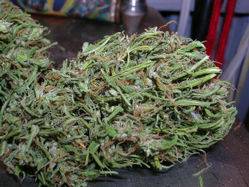
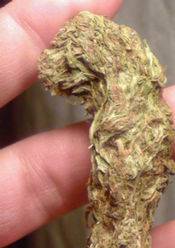
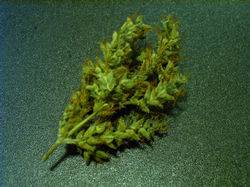
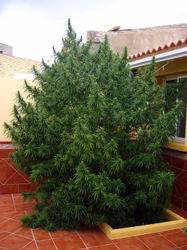
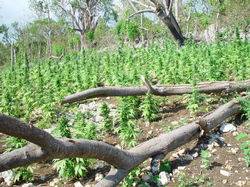
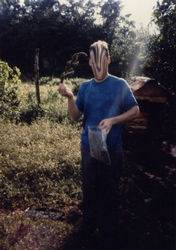
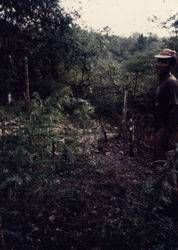
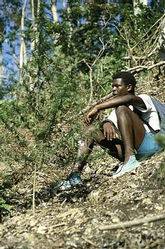
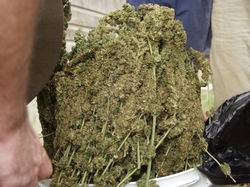
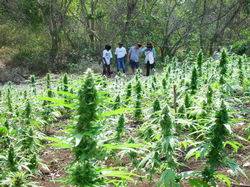
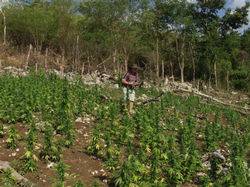
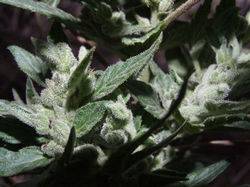
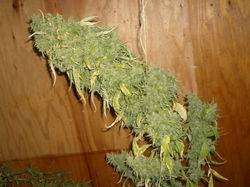
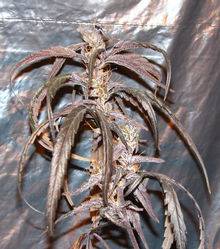
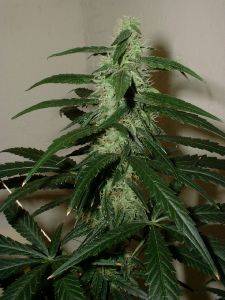
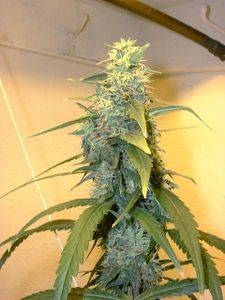
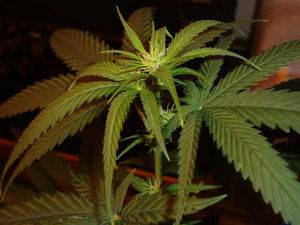
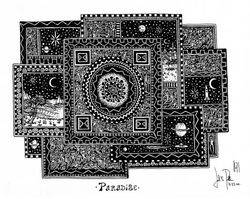
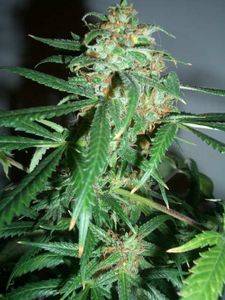
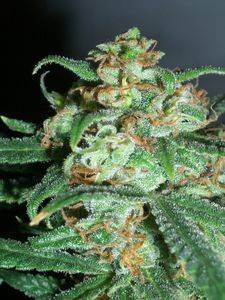
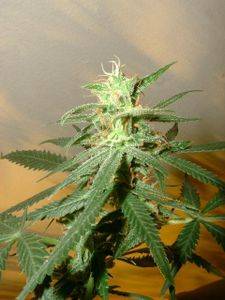

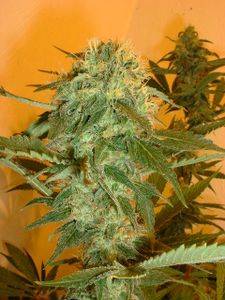
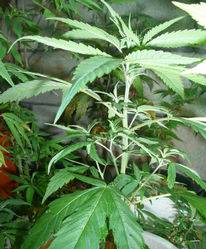
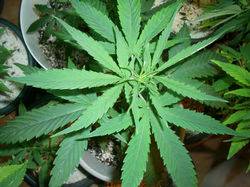
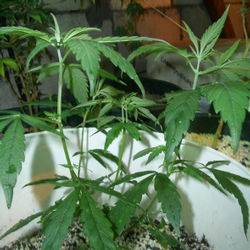
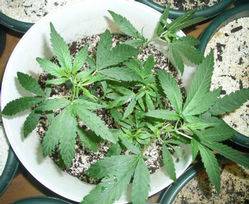

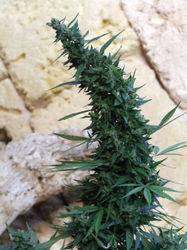
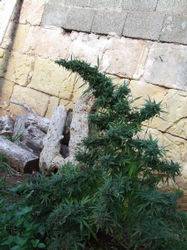
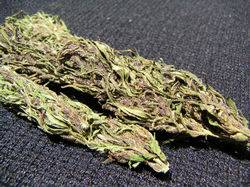




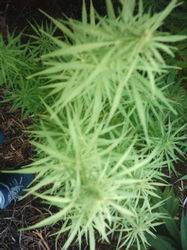
 awsome thread Motaco.!!. ill be watching this one 4 sure
awsome thread Motaco.!!. ill be watching this one 4 sure
